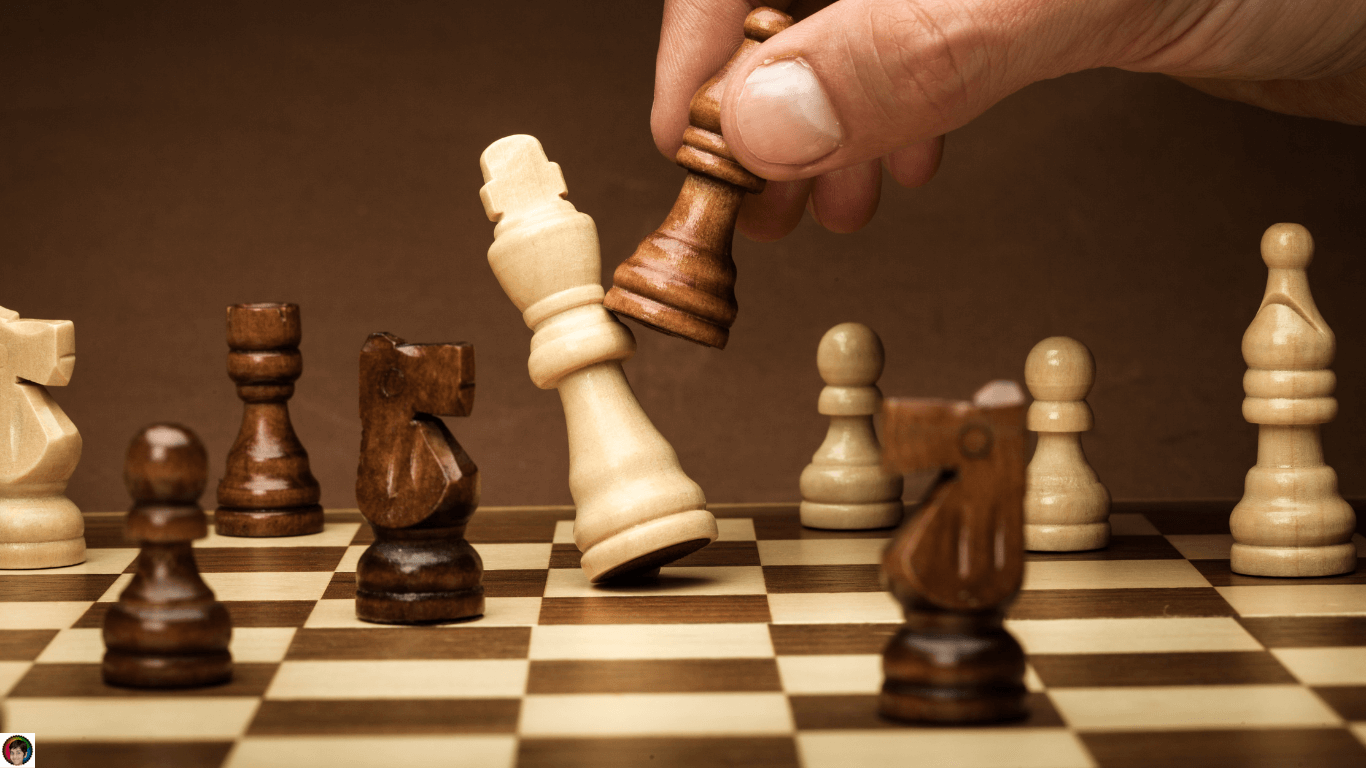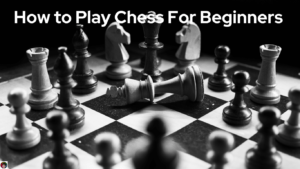Chess is a two-player board game that challenges your mind and strategic thinking. It’s a game that has been played for centuries and has captured the hearts and minds of millions of people around the world.
Whether you’re a complete beginner or have some basic knowledge, this guide will provide you with a comprehensive introduction to how to play chess.
From understanding the chessboard and the pieces to learning the basic rules and strategies, we’ll take you step-by-step through the fundamentals of this captivating game.
So, grab a chessboard, set up the pieces, and let’s dive into the world of chess!
If you’re new to chess, it can be a bit intimidating at first. However, if you understand the rules and start playing regularly, it can get much easier.
Chess is a board game played by two opponents on a 64-square board. The rooks occupy the corner squares, followed by the bishops and knights. Next comes the queen, who always goes on her own color (white queen on the white, black queen on black), and the king on the remaining squares.
Rules
Chess is a two-player strategy game that has been popular for centuries. It combines elements of strategy, tactics, and mathematics to produce a challenging challenge for players.
Although chess can be played by anyone, it is recommended that beginners learn the basic rules of the game before playing. This will help you to understand how to play and what the best strategy is.
One of the first rules to learn is the position of the squares on the chess board. This is critical for deciding which lines your pieces should be allowed to pass through, and which they should not. It is also essential to know the squares that your opponent can move their pawns onto.
Another important rule to remember is that a chess piece cannot move through a square of the same colour without stopping or capturing it. This includes rooks, bishops, and knights.
Once you have learned these fundamental rules, it is time to learn how to move your pawns and pieces. This will allow you to make better moves and win more games.
You should practice moving a variety of pawns around the board, and consider each pawn move carefully before making it. For example, you may want to move a centre pawn two squares to open up a line for your queen and kingside bishop.
Then, you can start to consider more advanced pawn moves such as converting your pawn into a queen or king. These are a great way to give your pieces more power and attack your opponent’s position.
Lastly, you will need to learn the basics of checkmate. This is the only way to win the game of chess.
Checkmate occurs when your king is in check and can’t escape. This can happen when you move your pieces such that your king is in check, or when you capture your opponent’s king with one of your own pieces.
Checkmate can be a devastating blow to a player’s position, and it is crucial to be able to defend against this threat. You can do this by making legal moves to get out of check, or by capturing the piece that is threatening your king.
Setup of Chess
Whether you’re a beginner, a veteran grandmaster or simply a chess enthusiast, getting the correct setup is crucial to enjoying a successful game. The right board, pieces and strategy can go a long way to boosting your confidence and your winning percentage.
The chessboard is divided into eight rows and eight columns, with 64 squares of alternating colors. Each square is unique, identified by its file letter and rank number.
Each row is occupied by a Rook, Knight and Bishop, with the Queen and King taking up the remaining space. The most important piece to remember is the king, and it’s a good idea to keep it safe from your opponents at all costs by castling it in as early a game as possible.
To make the best use of your king, it’s a good idea to think ahead and try to build up power around it. This includes bringing in support pieces that can help your main force get the upper hand on the board.

The best way to improve your chess skills is to practice regularly. This can be done by playing against friends or family members, or by enrolling in a local chess club. You can also find a wealth of information online about chess rules, strategies and tactics. In the end, you’ll have an arsenal of chess skills to draw on as you challenge the best players in your area.
If you’re feeling the urge to take your chess skills to the next level, check out some of the more advanced variants of the game, and see how you compare to others.
Pieces of Chess
Chess is a classic board game played by millions of people worldwide, and it’s easy to learn. Its rules are simple, and there are plenty of resources out there to help you learn chess strategy.
To play chess, you need to know how to set up the board and which pieces are needed for each player. There are six different kinds of pieces in chess, and they can be categorized as major (rooks, queens, and kings), minor (bishops, knights, and pawns) or special (the knight).
Each piece has its own set of movement rules, which are the rules that allow it to move from one square to another. Some of these rules are unique to a particular type of piece, but most have a common thread.
For example, a pawn moves one square forward per turn and can capture other pieces diagonally. A rook can move as many squares horizontally and vertically as it wants.
Other pieces, like a knight and bishop, can jump over other pieces, but can only do so if they’re directly in front of it. They can also move up or down, but not to the side.
The king, on the other hand, is the most powerful piece in the game. It can move any number of squares in any direction – up, down, to the side, and diagonally.
However, it can only do so once in a row, and can’t move backward or forward in a single row. This is why the king is referred to as “castling”.
In addition to the rules of movement, each piece has its own set of strategies and tactics. These can include capturing other pieces, protecting your own pieces in case they’re captured, controlling important squares on the board, or even declaring checkmate.
Some of these strategies are very simple, while others are more complex. For instance, it’s often best to avoid capturing pawns in the opening stages of a game, as this can slow down the development of your pieces. Instead, it’s often better to focus on bringing your pieces out from their starting squares and getting them moving around the board.
Strategy
Chess is a strategy board game that requires players to move their pieces around the chessboard using a set of rules. It can be intimidating at first, but it’s not as complicated as you may think.
A chess board is made up of eight squares, each called a rank or file. Each rank and file has a unique identifier: for example, the lower right-hand square is h1, and the upper left-hand square is e4.
When one player moves a piece onto a square that’s currently occupied by an opponent’s piece, he or she catches it (and removes it from the board)—this is known as capturing. It’s a crucial part of the game because it allows you to take an enemy piece off the board, allowing you to bring in another powerful piece from the opposite corner.
To play chess, you need to understand how each piece moves and how to use it effectively. Having the correct strategy can help you win games and become a better player!
The best way to learn how to play chess is to practice. You can do this by playing online against a computer or someone else. If you don’t have access to a chessboard or a friend who plays regularly, you can also download a free chess program like Natwarlal that helps you practice on the go.
Once you’re ready to get started, start by finding a chess opening that piques your interest. This will help you stay focused and motivated as you learn the basics of the game.
A good opening will set the stage for your game, and it should contain a mix of strategies that will allow you to control most of the board’s squares. This will give you the advantage in the middlegame and endgame when you’re trying to get your pieces into positions that will allow you to win.
The most important rule to follow when developing your pieces is to develop them as quickly as possible. This means moving them from their initial positions to active, more valuable locations on the board. This will allow you to make more moves and create more opportunities for yourself later in the game.

